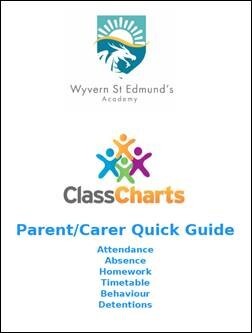- Home
- Curriculum
- Wyvern St Edmund's Reporting
Wyvern St Edmund's Reporting
Wyvern St Edmund's Reporting 2025/26
Your child will receive two reports home per year. Please see the Report Guidance & Supporting Information Link at the bottom of the page for the reporting home table.
Please note that the average refers to the mean score (totalling the scores and dividing by the number of students).
For up to date information on attendance, absence, homework, timetable and behaviour (including both rewards and sanctions), please see your child's Class Charts account.
Please click below for a useful guide:
Parent/Carer Quick Guide Report Guidance & Supporting Information
Report Guidance & Supporting Information
Year 7 Letter Explaining Data Collected from Tests in Y 7 Terms 1 & 2




